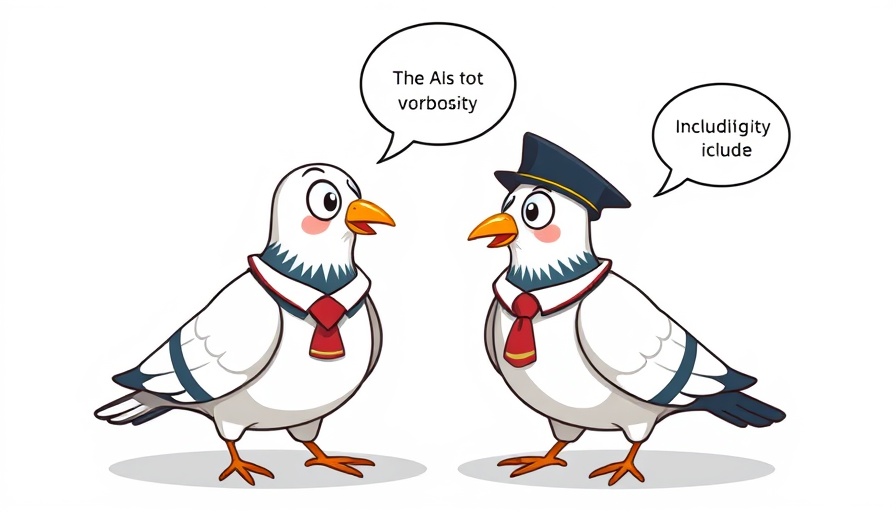
Understanding the Verbosity Tax in AI
As artificial intelligence continues to reshape our environment, one key concept emerging in discussions about AI economics is the "verbosity tax." This term refers to the hidden costs associated with per-token pricing models used in AI applications. Just as taxation can be complicated and often muddled, understanding this new layer of cost in AI interactions is vital for businesses and consumers alike.
The Burden of Token Count
In AI systems that utilize token counting for pricing, each interaction incurring a cost based on the number of tokens processed may inadvertently encourage verbose communication. Unfortunately, this verbosity can lead to increased expenses not just for consumers, but also for businesses attempting to utilize AI solutions efficiently. For instance, a concise interaction could yield quicker results but may not exploit the full capabilities of AI models, thus skewing performance in favor of prolonged exchanges.
Market Implications: Who Pays the Price?
The verbosity tax unveils economic disparities in AI affordability. Those with deeper resources may adapt to such structures, while others risk exclusion from comprehensive AI benefits. This concern ties into broader issues of inequality in technology access, especially in urban centers where the digital divide is most evident. In contrast, businesses trying to keep costs down might resist AI adoption altogether, stunting innovation and influencing workforce dynamics.
How Verbosity tax Influences AI Ethics
As policymakers become increasingly engaged with AI implications, understanding the verbosity tax allows them to tackle pressing issues such as job automation, social equity, and ethical governance. The dialogue around AI ethics must evolve to address how pricing structures can facilitate inclusion or exclusion, ultimately impacting jobs and roles within a culturally diverse society.
Strategizing for the Future
Understanding the verbosity tax necessitates a nuanced approach to adopting AI. It calls for businesses and policymakers to seek effective communication strategies that optimize costs while ensuring comprehensive use of AI features. Emphasizing clarity over verbosity can shift this narrative, guiding the technology toward greater societal good.
Insights and Motivation for Change
As stakeholders in AI landscapes—students, policymakers, tech innovators—intensify their dialogues about AI's role in society, recognizing the bureaucracy behind models and tax structures is essential. Collaborating to forge solutions that promote equitable access to technology can catalyze widespread adoption and foster innovation.
In conclusion, navigating the verbosity tax is critical not just economically, but ethically. As we uncover and confront these hidden costs, we advocate for a more inclusive and equitable digital future. Understanding this layer of AI costs equips all of us to make informed decisions for a progressive society.
 Add Row
Add Row  Add
Add 




 Add Row
Add Row  Add
Add 



Write A Comment